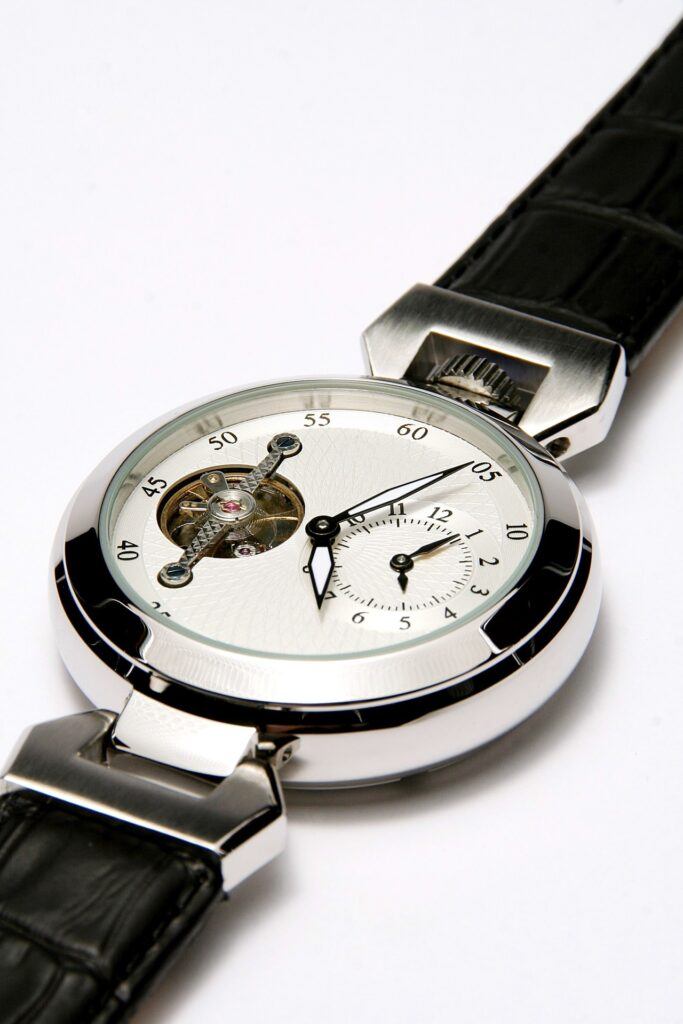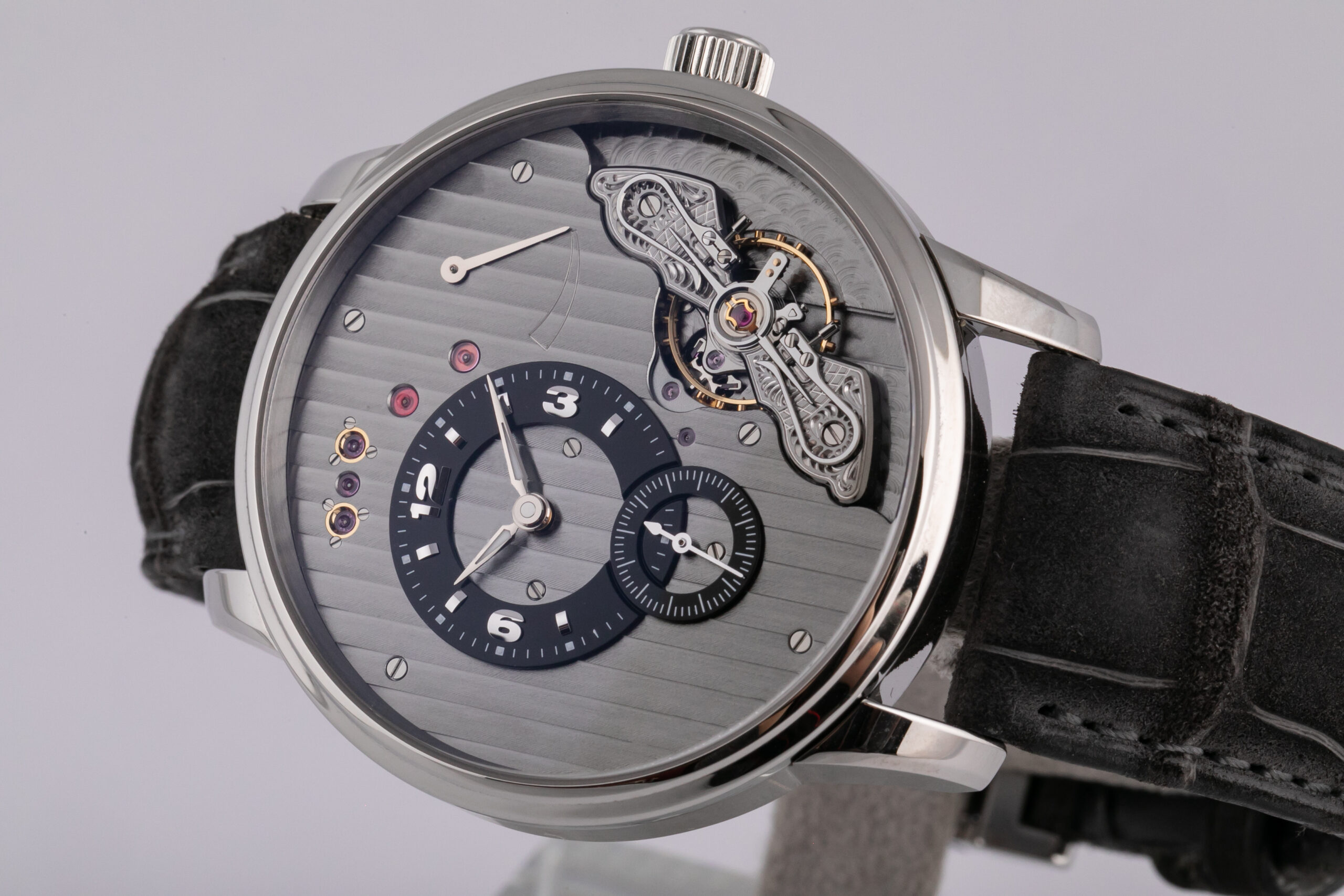If you’ve been looking for a new watch, or simply day dreaming over luxury watches, you may have come across the term “tourbillon” and wondered what in the world that meant.
Well, you’re not alone, because the same thing happened to me.
Even as I was researching the topic to educate myself, I found that many of the explanations were so jammed with scientific horological terms that it was hard to understand what these people were talking about.
I didn’t find this very helpful (since I’m not a professional watchmaker), so, I decided to write my own explanation in layman’s terms.
In this guide, we’ll discuss what tourbillon watches are and whether or not they’re worth the investment- all in terms the casual watch aficionado can understand.
Ok, let’s start from the beginning.
What Are Tourbillon Watches?
Easy – a tourbillon watch is a watch that has a tourbillon. Done and done…
Ok, sarcasm aside, a tourbillon is basically just a device that is added to a mechanical watch to improve its time keeping accuracy.
More specifically, a tourbillon is a cage that allows the internal time keeping components to rotate in order to reduce the affect gravity has on them.
Keep in mind this is a very basic definition, but generally speaking, that’s all it is.
Digging a little deeper, the tourbillon was created by the famous watchmaker, Abraham-Louis Breguet, back in the late 1790’s. This guy is considered one of the best watchmakers of all time, as he progressed the art in a number of ways.
The Breguet name might sound familiar- his watch brand is still going strong today, providing luxury timepieces that are awe inspiring,
Anyway, the tourbillon was designed to negate the effects of gravity on the internal components of the pocket watches of the time (recall, men were accustomed to using pocket watches up through the late 1800’s, although women were wearing them earlier).
Back in those days, before quartz watches took over the world, all watches and clocks depended on their mechanical parts for keeping time.
These mechanical components were affected by the environment in a lot of ways. Things like temperature changes, vibrations, and even the position of the watch could affect accuracy.
Because most pocket watches were worn, you guessed it, in a gentleman’s pocket, the watch found itself resting in a vertical position for most of the day.
Well, the brilliant watchmakers in the 1700’s found that since these watches spent most of their time in this position, gravity was actually affecting the operation of the gears and springs (escapement and balance wheel) that were responsible for making the watch tick.
And thus making them less accurate.
Breguet came up with the solution- he designed a system where these gears and springs were attached to a rotating cage that would rotate periodically, thus negating the affect gravity was playing with the pocket watch resting in a vertical position.
He named this rotating cage system tourbillon, the French word for “whirlwind”.
Did tourbillons improve the accuracy of those pocket watches? Hard to tell. That’s a debate likely to keep horologists entertained for hours at a time.
What we do know is that pocket watches of that era weren’t nearly as accurate as the watches we take for granted these days.
These days, most mechanical watches are accurate to the point where they might lose 5-10 sec/day. Back in the time of Breguet, a typical pocket watch might lose 10 or more minutes a day.
It’s uncertain how much of this inaccuracy was due to gravity and positional issues or simply the materials these pocket watches were made of to begin with.
What isn’t debatable, though, is the fact that the tourbillon is one of the most challenging watch components ever built.
As time passed and pocket watches were being swapped out for wristwatches, watchmakers didn’t forget about the tourbillon system.
Advancements on the original design were made, as well as adapting the technology to fit the smaller carriages of modern wristwatches.
Even as time keeping technology and watch materials continue to become more advanced, a lot of watchmakers are still choosing to include tourbillon watches in their lineup today.

Are Tourbillon Watches Worth The Investment?
Now we know what tourbillon watches are, but the harder question is whether or not it makes sense to invest in one. This is a personal question of course, but there are a few things you should consider.
First of all, pretty much all experts will agree that modern tourbillon watches are no more accurate than “regular” watches.
All watches these days are pretty darn accurate. Not to mention that most men don’t even wear watches to keep time anymore. Let’s face it- in the era of the smartphone, no one needs a watch for keeping time.
Modern watchmakers aren’t adding them for accuracy, they’re adding them for the sake of mechanical prowess.
Tourbillons are hard to build, so it’s impressive when a watch has one.
Think about it – these systems are complicated and intricate and have to be small enough to fit in a watch that is designed to fit on your wrist.
So when a watchmaker has the abilities to build one, you know darn well they’re gonna make sure everyone knows it. That’s why the tourbillon is usually visible through the dial.
And these days there are all kinds of tourbillons being used- flying tourbillons, double and triple-axis tourbillons, and a gyro tourbillon being used by the luxury brand, Jaeger-LeCoultre.
So watchmakers are creating these complicated mechanical watches that don’t keep better time. Why?
I think this goes back to the reason people still want mechanical watches to begin with- for the style and representation of achievement.
For a lot of men, a watch is pretty much the only piece of “jewelry” we own. It’s something we can save up for and splurge on for celebration (or just for the heck of it).
A nice watch can be a cherished gift or a sign of success. In other words- watchmakers make these watches because people buy them.
As you’d expect, tourbillon watches tend to cost a lot more than watches without them. This is because you’re paying for the skill and man hours it took the watchmaker to build it.
Historically, these watches came with astronomical price tags. We’re talking tens of thousands just to think about getting a tourbillon on your watch.
And although many tourbillon watches are still crazy expensive (the Breguet models go for 6 figures), there are plenty of significantly more affordable options available today.
There are Chinese watches with fully functioning tourbillons that cost well under $1000. Others are offering affordable tourbillons for only a few hundred bucks.
With the introduction of such affordable tourbillon watches, it’s possible that prices on these luxury items will start to decline, but I wouldn’t hold my breath.
Even though there are budget brands available, I bet the luxury brands will still thrive with their absurdly priced options.
And that’s because nothing says you’ve made it like a crazy expensive watch.
And I’m not hating- I say if you’ve got the money, spend it!
So, long-story-short: are tourbillon watches a good investment? Well, if you’re looking for an elegant timepiece that represents the pinnacle of watchmaking skill, then sure, go for it. It’s unlikely that a luxury watch is going to go down in value.
Just don’t kid yourself thinking that the tourbillon adds any functional value to the watch.

